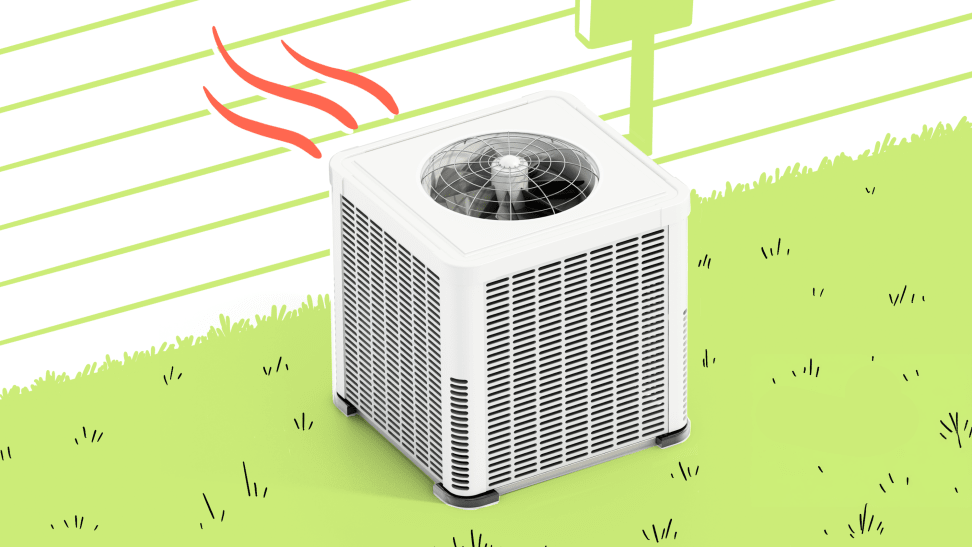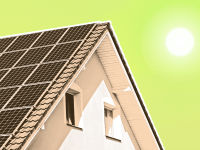A heat pump can reduce your carbon footprint—cheaply
The best way to beat your heating bills
 Credit:
Reviewed
Credit:
Reviewed
Products are chosen independently by our editors. Purchases made through our links may earn us a commission.
As many of us look for more efficient, sustainable ways to run our households, one of the most important considerations is whether to install or retrofit your home with an updated HVAC system.
Home heating is a costly expense, especially for homeowners who rely on oil and propane, the costs of which can rise drastically year after year. In Massachusetts, an average gallon of heating oil in November 2024 cost $3.49, but that price jumped as high as $4.19 per gallon in November 2025. Multiply that by a 150-gallon tank and you’re looking at a nearly $105 increase for a single tank refill. A 2,000-square-foot home will use 800 to 1,000 gallons of oil in one year, which translates to an annual cost increase from 2024 to 2025 of approximately $630.
If you’re wanting to consider a home heating solution that relies less on fossil fuel than traditional oil burners or gas furnaces and will help cut your energy bills in the long run, air-source heat pumps and heat pump systems, which run on electricity, are an effective and energy-efficient option that doesn’t require invasive construction and can often be installed using your home’s existing ductwork.
What is a heat pump, and how does a heat pump work?
Air-source heat pumps are heating and cooling systems that feature a compressor installed outdoors, which can transfer air both into and out of your home.
Operating on electricity, these heat pumps can pull heat from the air outside into your home or transfer warm air out of your home. This means that the same unit can act as a heater in cold months and an air conditioner in hotter ones.
Ground-source heat pumps, also called geothermal heat pumps, operate on similar principles, transferring the heat from the ground in your yard into your home through a series of pipes that lead to ductwork, though they can be more costly to install.
Depending on whether or not your home is already equipped with ductwork, you can install a high-efficiency heat pump that connects to the air conditioning system that’s already in place in your home, or you can go with a ductless heat pump (also known as a mini-split), which is the most affordable type of heat pump on the market.
Both styles are more efficient than traditional heating units, and since they don’t need fuel to run, they’re an easy way to reduce carbon emissions.
Since heat pumps run on electricity, if you pair them with a renewable energy source like solar panels or a small wind system, you could effectively create a carbon-neutral home heating system.
Simply put, as a heater, modern air-source heat pumps are an efficient way to heat your home while reducing your carbon footprint, and as an air conditioner, they can cool a home twice as efficiently as a standard window unit AC, making heat pumps a year-round workhorse in your home.
How much does a heat pump cost?
Want to know how much a heat pump costs? The answer varies, depending on what you’ve got.
The most common style of heat pump is the mini-split heat pump, which doesn’t require pre-existing ductwork and is incredibly versatile. It can be installed in a single room of a home, in an apartment, or throughout a house.
With mini-splits, a ductless unit called a “head” is installed in a single room or area in the home, and a larger home can often require multiple heads for total cooling and heating throughout.
The overall cost of mini-splits depends on the number of rooms you plan to heat or cool and the size of the unit required. The beauty of a ductless system is that you can always start with one unit, whether for financial reasons or to supplement your existing heating system, and add more down the line, if necessary.
Alternatively, a ducted system connects your home’s existing ductwork to an outdoor compressor and is generally able to heat and cool most, if not all, of your house through the existing ducts.
There’s also an option called a compact-ducted system, which still uses the existing ductwork of a home, but only funnels air through handlers that serve a smaller area.
Though the cost of each unit and the installation varies widely, according to Northeast Energy Efficiency Partnerships, you can expect to pay between $3,000 and 6,000 for each room that’s connected to a ductless head or a compact-ducted system.
From personal experience, I can confirm that this range is fairly accurate. The 2019 installation of two ductless heads that connect to a single outdoor compressor in my home—including parts and labor—cost $8,400, which falls right in the middle of NEEP’s range.
The cost of installing a ducted air-source heat pump can be significantly higher than the cost of ductless mini-splits because it requires reconfiguration and the installation of compressors that cover the entire house.
HVAC.com estimates an average cost of anywhere from $5,000 to $10,000 for the installation of ducted heat pumps.
What is the best heat pump for you?
There are several ways to start your research on finding the right air-source heat pump or mini-split heat pump for your home.
You can visit the Energy Star website to research heat pump brands, models, and sizes, and compare their energy efficiency.
The site also provides information on the tax incentives available for purchasing and installing heat pumps.
Currently, the government offers a 30% tax credit, up to $2,000 annually, on expenses related to the purchase and installation of new heat pumps. This particular program runs through December 31, 2032. The Energy Star site can even help you calculate cost savings of switching from your current heating and cooling systems to a heat pump if you want to factor in your future utility costs.
While many people use heat pumps to supplement other heat sources, if a heat pump is your primary heating source, you’ll want to research which ones can handle the temperatures in the region where you live.
While it’s true that heat pumps that were designed decades ago were often unable to handle severe cold, the technology has come a long way since then, and most modern heat pumps provide effective heating even when outdoor temperatures plummet below zero.
If you’re especially concerned about a heat pump’s effectiveness under cold temperatures, you can visit the Northeast Energy Efficiency Partnerships site, which is an incredibly detailed database run by a non-profit dedicated to efficient energy solutions.
The Cold Climate Air Source Heat Pump Product List featured online is a wealth of information about which heat pumps excel under specific temperature conditions around the country.


